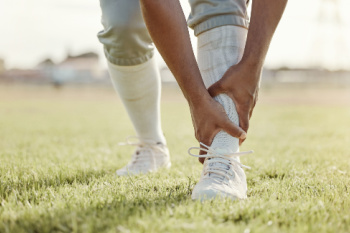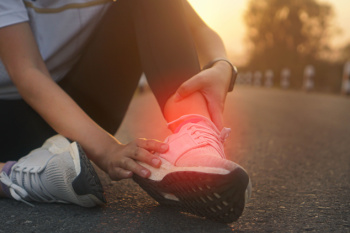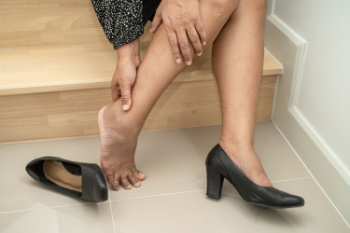
Gout is a form of arthritis that often affects the foot, especially the joint at the base of the big toe. It occurs when high levels of uric acid in the blood lead to the formation of sharp crystals that collect in the joints. A gout attack in the foot may cause sudden pain, swelling, redness, and warmth, typically beginning at night and worsening quickly. Over time, repeated attacks can lead to joint stiffness, and, in some cases, the development of hard lumps called tophi, which may damage nearby bone and cartilage. A podiatrist can diagnose gout through joint fluid analysis, imaging, or blood tests. Medical treatment may involve anti-inflammatory medication or corticosteroid injections to reduce pain and swelling. In cases of chronic gout, long-term strategies to lower uric acid levels may be needed to prevent joint damage. If you have pain caused by gout, it is suggested that you are under the care of a podiatrist for appropriate treatment.
Gout is a painful condition that can be treated. If you are seeking treatment, contact one of our podiatrists from Illinois . Our doctors will treat your foot and ankle needs.
What Is Gout?
Gout is a form of arthritis that is characterized by sudden, severe attacks of pain, redness, and tenderness in the joints. The condition usually affects the joint at the base of the big toe. A gout attack can occur at any random time, such as the middle of the night while you are asleep.
Symptoms
- Intense Joint Pain - Usually around the large joint of your big toe, and it most severe within the first four to twelve hours
- Lingering Discomfort - Joint discomfort may last from a few days to a few weeks
- Inflammation and Redness -Affected joints may become swollen, tender, warm and red
- Limited Range of Motion - May experience a decrease in joint mobility
Risk Factors
- Genetics - If family members have gout, you’re more likely to have it
- Medications - Diuretic medications can raise uric acid levels
- Gender/Age - Gout is more common in men until the age of 60. It is believed that estrogen protects women until that point
- Diet - Eating red meat and shellfish increases your risk
- Alcohol - Having more than two alcoholic drinks per day increases your risk
- Obesity - Obese people are at a higher risk for gout
Prior to visiting your podiatrist to receive treatment for gout, there are a few things you should do beforehand. If you have gout you should write down your symptoms--including when they started and how often you experience them, important medical information you may have, and any questions you may have. Writing down these three things will help your podiatrist in assessing your specific situation so that he or she may provide the best route of treatment for you.
If you have any questions, please feel free to contact our offices located in Wheeling and Berwyn, IL . We offer the newest diagnostic and treatment technologies for all your foot care needs.










